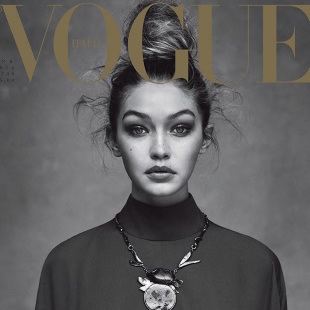“If you want to become a model, you need to know that it’s not all about good looks, good hair and the perfect smile. If you want to succeed in this industry you need to market yourself in the right way and have images in your portfolio that sell you and what you can do.”
First things first: good looks are not enough. It’s a given that most models are attractive – although not always conventionally so – but that isn’t what makes a model.
There are many different types of modelling, and each has different requirements for what models should look like. Petit sizes, plus sizes, curvy, slender, children, older adults…. the modelling industry today is far more varied than it’s been before. By that logic, you’d think that anyone could become a model.
That’s true, in some ways. Anyone could become a model – but not everyone has what it takes to build a successful modelling career. Whatever you look like, there are more options open to you than ever before, but taking advantage of those options takes more than looks.
Here are the three things that set the successful models apart from the pretty faces.
3 Things You Need to Know To Become A Model
Acting Ability
Become a model | Character Modelling
“If you want to have a successful career in modelling having an acting background can be very helpful. Commercial modelling in particular is like acting without lines. Taking on different roles and portraying different characters is all part of the job.”
Modelling isn’t just about posing. It’s about bringing a brief to life. Particularly within the commercial modelling sector, the ability to act – to portray different expressions, to capture a character, to look believable – is critical.
How often do you see adverts where a model looks like they’re conscious of being in front of the camera? Never. Instead, you see models interacting with props, with other people. They look natural, believable, perhaps showing an idyllic version of real life but never self-conscious or posey.
Acting ability is absolutely critical to show in your model portfolio. The purpose of your model portfolio is to show what you can do, as well as what you look like. It’s to show the range of characters you can believably play. If your portfolio demonstrates acting ability, you’re much more likely to get invited to castings because you’re showing the agency, the casting director and the client the range of work you can do.
Personality
Commercial Modelling
“Want to leave a lasting impression on a casting director? Want to ensure that you get booked and rebooked? It’s is all about having the right attitude and the right personality.”
Having the right look and demonstrating acting ability will help get you booked, but having the right personality is what gets you rebooked.
The same rule holds for all industries: people want to work with people they like.
Bad attitude has no place if you want to be a successful model. You must be resilient, patient and always polite. You’ll be reliable, and always arrive in good time. You’ll make an effort to build rapport with the agency, the casting director and the client and you’ll always be looking for ways to make their lives easier.
Top casting director Mark Summers points out the big difference the small things can make – a simple thank you at the end of a job, for example. Successful models treat everyone they come into contact with respectfully and politely, and that makes a huge difference when it comes to winning more modelling jobs.
If you’re likeable, easy to get along with and professional you’re giving yourself the best chance possible to build a successful modelling career – which brings us to our last point: professionalism
Professionalism
Professional Model
“If you want to become a model, professionalism is one of the most important qualities you can have.”
If you want to become a model, professionalism is one of the most important qualities you can have.
Professionalism means treating your modelling career like a business. It means always being in the right place, at the right time, with the right things. It means knowing what’s expected of you, and delivering time and again.
It’s the little things, like going straight to reception at a modelling casting and finding out if you need to sign in, and if the casting director has left a brief for you to prepare. It’s having your measurements to hand when you’re asked. It’s knowing which specific job you’re auditioning for at a casting. It’s knowing who the casting director is and greeting them by name. It’s knowing the director, their style and the previous jobs they’ve worked on, so you come across as knowing what you’re talking about.
In all, it’s about knowing the modelling industry inside out. The key takeaway for aspiring models is this: modelling is a business, and if you don’t act like a professional, you won’t build a successful modelling career.
There’s no shortage of pretty people, but becoming a model is about much more than having the right look. Modelling is a business, and the people who make decisions about your career have no time to babysit, or pander to a bad attitude, or wait around for you to get organised.
The client is spending a huge amount of money, often millions, on a job and the model is only one part of the equation. A model who can act and who is likeable, friendly and, above all, professional is more likely to get booked and rebooked for jobs because they can be trusted to do the job well. With large amounts of money at stake, being trusted to do the job well means you’re less of a business risk to hire – and more of a valuable asset. That’s what sets successful models apart.






